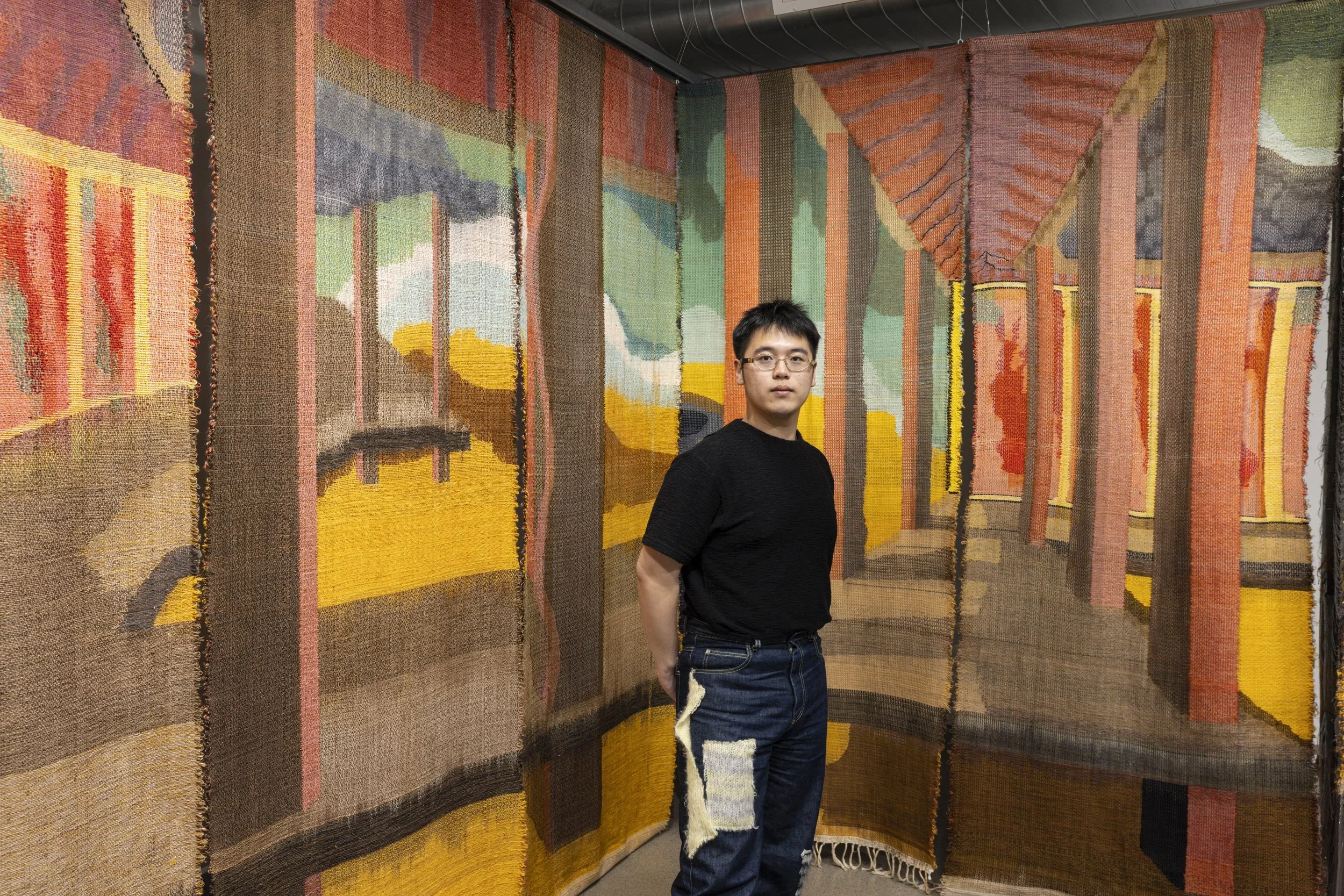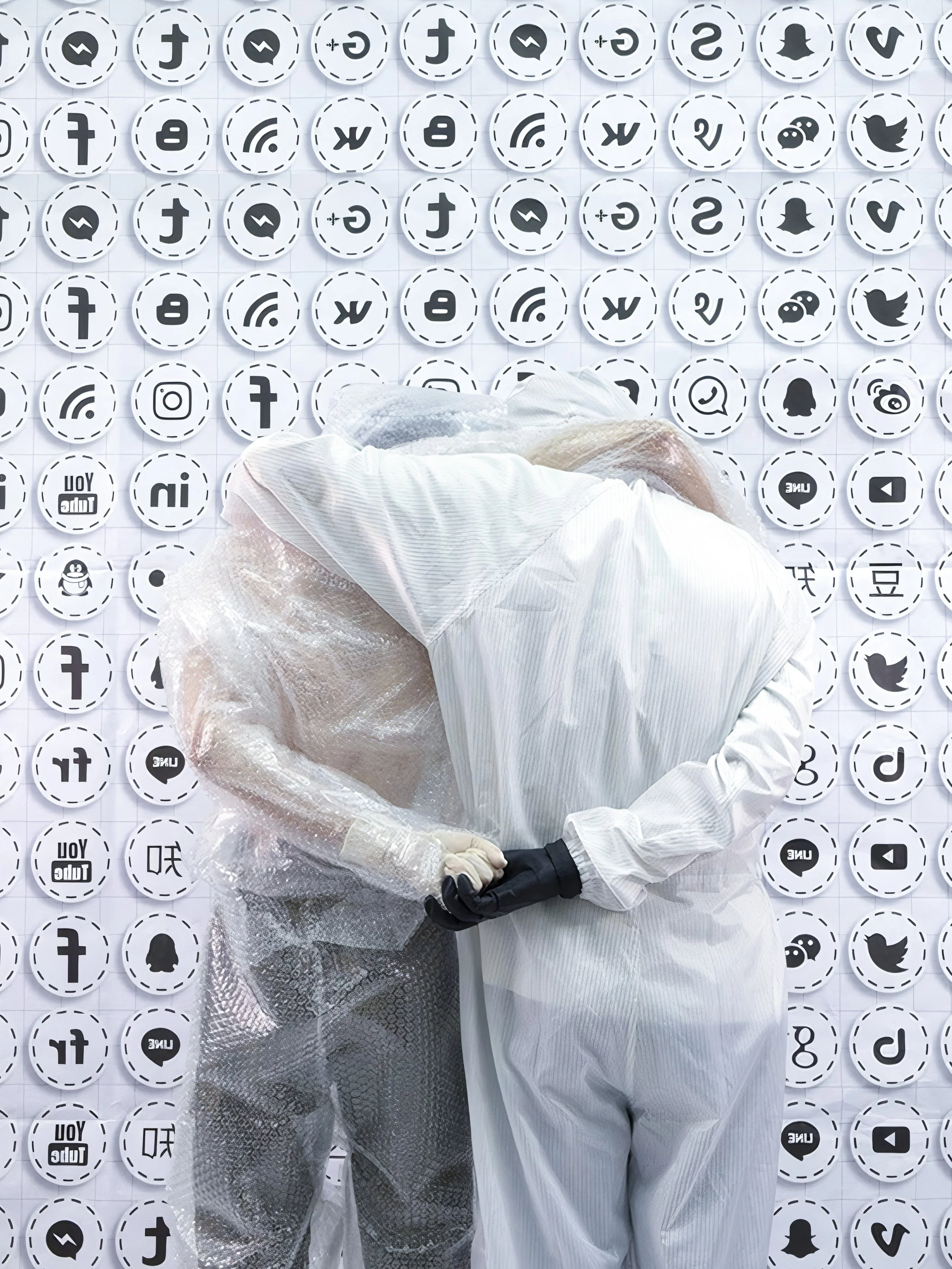10 Questions with Kexin Liu
Al-Tiba9 Art Magazine ISSUE12 | Featured Artist
Kexin Liu is a Chinese multi-disciplinary artist and design researcher based in the UK. She received a BA in Spatial Design from the Central Academy of Fine Arts (Beijing) in 2019, then went on to complete a MA at the Royal College of Art (London) in 2022, where she developed practice-based research on creating generative artworks with various living autonomous systems.
Kexin has a fascination with everything queer & peculiar. As a generalist, she particularly enjoys developing simple, yet unexpected art narratives/design solutions based on extensive research and collaboration with people from various disciplines.
Kexin Liu - Portrait
2065 | Project Description
Marriage has always been a social construction, and its meaning constantly evolves as society's order changes over time. It is said that the technological singularity will be the turning point of the human race. With the alarmingly rapid developments of artificial intelligence, space colonization, genetic modification, and nanotechnology, human society is bound to be drastically reshaped in the next few decades. So what would marriages look like then?
By creating wedding rings for couples living in the year 2065, this series hopes to explore three types of future marriage — Interspecies Marriage (marriage between a Human and an AI), Interstellar Marriage (marriage between an Earthling and a Martian), and Renewable Marriage (marriage between two Amortals) to provide insights into our future love life.
2065, sterling silver, glass, diamonds, usb, watch parts, 2019 © Kexin Liu
Lost in Translation | Project Description
As humans, we tend to assume that all beings express themselves the same way we do, with a wide range of facial expressions and body gestures that matches their internal states. While animals like domestic dogs are capable of producing sophisticated facial expressions, most non-mammalian animals lack the physiological basis to do so, which leads us to believe fish and reptilians with poker faces are coldblooded, and birds with a perpetual “smiley” beaks are always cheerful.
The question is should we push past our human bias and be more empathic towards our non-human companions, or should we contend with the masks we assigned to them?
Disclaimer: No animals were harmed in this project. Their bodies were sourced from local pet shops and made into taxidermy by the artist.
Lost in Translation, sterling silver, goldfish specimen, 118×96×25 mm, 2019 © Kexin Liu
Get your limited edition copy now
INTERVIEW
Let's start from the beginning. How did you get involved with art, and what influenced you to follow this path?
I guess it has a lot to do with the unfulfilled dreams of my family members. My parents and some of my aunts and uncles dreamed of pursuing creative careers in art and literature when they were young, but it wasn't a viable career path then, especially if you weren't particularly wealthy or had any connections to the industry. So when I showed an interest in drawing as a child, they encouraged it wholeheartedly and reassured me that life is too short for "practical" choices.
How much does your background influence your current work?
My early training in spatial design provided me with a basic understanding of most art/design disciplines. With this broad overview, I was able to make creative decisions more fluidly and shift between mediums and methodologies that are considered polar opposites, so in a way, it had a bigger influence on my current way of working instead of on the work itself.
Interspecies Marriage, sterling silver, glass, usb, 18.5×14×26.5 mm, 27×13.5×4mm, 2019 © Kexin Liu
Renewable Marriage, sterling silver, glass, diamonds, 24×24×7 mm, 26×26×8 mm, 2019 © Kexin Liu
Your work is across different mediums and often mixes with design. How do you blend and mix those different aspects of your production?
For me, the lines between different mediums can be quite blurry. And when it comes to solving technical problems related to mixed media production, it is always a good idea to knock on the doors of talented people than figure it all out on your own.
Where do you find inspiration for your artworks? Do you have any artist or movement you admire, or is your inspiration more organic, coming from everyday life?
The majority of my work is inspired by the things that keep me up at night. In the past, these have been death, relationships, future technology, and, more recently, online censorship. For me, art practice is, first and foremost, a way of healing, untangling fear of the unknown and turning it into curiosity. And since I am not alone in my concerns, my artworks often end up resonating with the broader audience, even though they were started for more personal reasons.
Interstellar Marriage, sterling silver, watch parts, 24×18.5×21.8 mm, 24×20×23.2 mm, 2019 © Kexin Liu
In your work, you deal with a vast array of different themes. What are the key ones you address and consider central to your research?
I do have a keen interest in exploring the different aspects of "human relations", be it the impact of rapid technological advances on our social lives, the power struggle within online censorship/self-censorship, or the entanglement of different lifeforms. The question of "how humans can relate to each other and beyond" remains the focal point of all my practice.
Being heavily influenced by the social-political and ecological disruptions followed by the Covid-19 pandemic, my practice for the past two years has shifted into creating generative artworks with various autonomous systems, such as artificial intelligence, plant life, microorganism as a way to subvert the power relations between human and the non-human.
Let's focus on your series, Lost in Translation. How did you come up with the concept for this series?
The idea came from a casual conversation with a friend who told me losing a goldfish would not be as painful as losing a dog or cat since she would not be as emotionally attached to them. Her comment stuck with me and got me thinking about the different ways we treat different kinds of pets. If your dog dies, you will likely want to bury it properly, but if a fish dies, people typically just flush it down the toilet. That eventually led to an investigation of misinterpretations of animal behavior and the study of taxidermy.
Lost in Translation, sterling silver, gouldian finch specimens, 150×112×30 mm, 2019 © Kexin Liu
Lost in Translation (detail)
You work with traditional mediums, like installation, sculpture, and digital media. How important are new technologies and innovations for your work? And how do you keep up to date with the latest developments?
I'm not up to date with the latest technology, nor am I ambitious enough to do so. However, when I do incorporate any sort of technology into my artwork, whether ancient or cutting-edge, I always make sure it's an integral part of the whole instead of some flashy gimmick glued onto a theme. As Marshall McLuhan said, "The medium is the message," and I am willing to learn and design the most appropriate vessel to convey my message.
On that note, in 2065, you look at marriages and how they will change in the future. Can you tell us more about this project?
Yes, this project is speculation of our future love life based on the technological predictions of brilliant futurists like Kevin Kelly, Dr. Michio Kaku, and Ray Kurzweil.
It envisioned three scenarios, one where humans fell in love with silicon-based entities like A.I, one where super long distance relationships emerged as a result of space colonization, and one where life expectancy has dramatically increased due to advanced life extension technology, so people started adopting a 7-year wedlease instead of making lifelong commitments. And the design of the three pairs of wedding rings embodied the new dilemma people will be facing in the year 2065.
Lost in Translation (Hamster), sterling silver, hamster specimen, 103×91×35 mm, 2019 © Kexin Liu
What are you working on right now? Do you have any new projects or series you are currently developing?
At the moment, I'm juggling two projects. One project involves creating a digital art piece about the censorship of Chinese LGBTQ+ content, which is still in the early stages of research. The other is a series of silly comic strips about a ginger cat that can photosynthesize and shapeshift.
Finally, where do you see yourself five years from now?
Well, the Dutch way of experimenting with art, design, and technology simultaneously is something I deeply identify with, so hopefully, I will be in the Netherlands collaborating with like-minded individuals by that time.




























